
Charting the Mayoral Maze – Part II

Back on April 15th, I wrote a piece for Empire Report entitled “Charting the Mayoral Maze.” That piece, which was a de facto cheat sheet for handicapping this mayoral race, concluded that it was then still too early to accurately glimpse who would win this mayoral primary, but that whoever got the late break among Hispanic voters would hold the whip hand coming down the stretch. I still believe that the candidate who gets a late breaking boost from Hispanic voters will be the winner of this primary.
Meanwhile, much has happened in this race in the last two plus months as we head towards the home stretch of this primary race. As May turned into June, I believe that the mayoral race has shifted sharply in favor of Eric Adams and to a lesser extent Kathryn Garcia, while every day it is becoming more apparent that Andrew Yang’s deflating tires have placed him in a ditch with primary voters. Stringer was just beginning to re-emerge as a factor in this race (as reflected in the coverage of the second TV debate), but the story of the second woman coming forward has functionally ended that prospect.
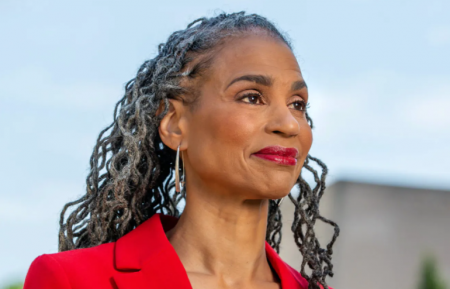
Maya Wiley is still capable of catching fire, but so far, her campaign has generated more sparks than flames. Nevertheless, with the demise of Morales’ campaign and the perceived implosion of Stringer’s prospects, Wiley has no more excuses and only opportunity in her path. In the middle of writing this piece, AOC endorsed Wiley which accelerated the energy behind Wiley, begun by the Hakeem Jeffries’ endorsement, for Wiley to consolidate a lead among the third of the vote that is cast by progressives. The question now becomes can Wiley over the next two weeks simultaneously crack Adams’ hold on the support of Black voters, while also streaking among Hispanic voters and picking up a lot of second and third place votes of the moderate and traditional liberal female voters who recently have been gravitating to Garcia? For Wiley to vault into contention she must become a magnetic force for disparate voters in the week beginning June 6th which ends with early voting commencing on June 12th. Maya Wiley remains the ultimate low floor but high ceiling candidate. Wiley’s ceiling just got higher, but given how late her spurt started, she has precious little margin for error or stumbling in terms of media coverage of her campaign.
Any doubt about the influence of editorial board endorsements should dissipate in the wake of Kathryn Garcia getting endorsed by both the Times and the Daily News buttressed by her endorsements from the League of Conservation voters and Planned Parenthood. Depending on the poll, Garcia’s support either tripled from 3-5 percent to the 11-15 percent range or quadrupled up to 20-21 percent in the wake of these endorsements. Garcia has proven herself a shrewd and capable if not a charismatic candidate. Like many, I seriously and profoundly underestimated her potential as a candidate in my April 15th piece, although she still needs to take a lot of ground in a very tight time frame, to move beyond beating expectations, into truly contending for the winner’s circle.
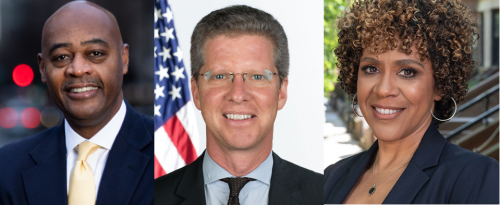
Regrettably, for Ray McGuire and Shaun Donovan, as well as Diane Morales, they all appear to have fallen by the wayside of this contest in terms of conventional wisdom and I see no cause to rebut that consensus. I felt a little sad for Ray McGuire at the second debate, for he was clearly the well informed and thoughtful adult in a room that didn’t really want adult supervision. Similarly, Donovan proved himself a creative force on policy and Morales a passionate advocate for cutting edge progressivism, in that second debate, but all three appear to have become the proverbial trees falling in an empty political forest.
The release on June 7th of the NY1/ Ipsos poll , will only help to solidify the sense that Adams is the clear front runner , with Yang in the middle of a steep decline , while Garcia and perhaps Wiley are worth keeping an eye on. This is the second NY1/ Ipsos poll and it found: Adams at 22 percent( +9 percent), Yang at 16 percent ( -6), Garcia at 15 percent( +11), Stringer at 10 percent (-1 ), Wiley at 9 percent( +2) with Morales unchanged at 5 percent, McGuire at 4 percent(-2) and Donovan at 3 percent( -3), with 16 percent undecided(-10). This poll showed that 46 percent of primary voters believed that tackling crime should be the next mayor’s top priority and by 72-20 percent felt that more cops should be put on the streets.
We don’t know how accurate this poll is, but it will help set expectations not just for voters, but among the editors and producers who drive the coverage decisions for Gotham’s robust free media (the Times, the DN, the Post , 5 TV stations plus NY1 as well as Hispanic TV , the ethnic press and the full range of on line news sites). Unlike most large cities and regions, where paid media drives the final stages of a campaign (e.g., in Florida, Texas and California), here in New York, the free media coverage tends to drive the final fortnight of most mayoral campaigns. So far, Eric Adams has been far and away the most successful candidate in winning the battle for getting free media to underscore his campaign’s messaging.
The race is still too early to call for the political handicappers posing as pundits, especially given the uncertain impact of NYC’s first use of Ranked Choice Voting (“RCV”). Meanwhile, victory is still likely to come to the candidate who gets a clear break among the late deciding fifth or so of the electorate that constitute the diverse Hispanic communities. Right now, Eric Adams appears best positioned to achieve victory, but there is still time for one last sharp turn to take this race in a new direction, to the likely benefit of Kathryn Garcia and/or Maya Wiley.
Let’s analyze how the race has changed and developed since mid- April, so readers can judge for themselves if my assessment holds water. After all my read of this contest could be terribly wrong. Let’s chart our way through this mayoral maze one more time before the voters rightly take control of this contest, first via early voting beginning on June 12th, then with widespread absentee and ultimately in person voting on June 22nd while availing themselves or not, for the first time, of the option of alternative choices in an RCV election.
The first major development in this campaign, as Spring turned to Summer, has been that the dogged discipline of Eric Adams and his campaign’s messaging. Adams staked his quest for the mayoralty upon a belief that there were two majorities which existed side by side in the minds of voters. One majority believes that we need criminal justice reform in the form of weeding out racial profiling from policing and the tragic violence derivatively afflicting communities of color. The second majority, rejects what the “defunding the police” rhetoric conveys in plain language and wants the benefits of pro-active community policing, especially in the midst of a crime surge. Furthermore, if you plotted out public opinion along those two majorities as a Venn diagram, the overlap would occur among Hispanics, Asians and older African American voters. Adams, in effect planted his case for the mayoralty along this Venn diagram, proclaiming that justice and safety were not mutually exclusive goals, while most of the field chose to ally themselves with one or the other majority, or agreed with Adams but were less credentialed than Adams as a crime fighter (Yang and Garcia).

The risk for Adams in taking this approach was that by staking control of the ground uniting both majorities, that he would get caught in the middle, losing support among Black voters to Wiley and perhaps even McGuire, without being able to connect with outer borough white ethnics for their first, second or third choice votes under RCV. But events and the tabloids helped Adams make his case to voters. The surge in crime was irrebuttable and it had four tributaries which became a coursing river for the coverage in the Post and the Daily News (the overall rise in shootings and murders, a clear uptick in violence in the subways, mostly due to mental health issues revolving around slashings and shoving people onto the tracks and more recently the hateful anti-Asian and anti-Semitic violence). The coda for this in terms of the public consciousness was the weekend when Times Square was shot up with stray bullets.
Adams’ campaign spent late April and May in effect turning a potent political double play, day after day in the tabloids. In the Daily News, Adams used events to get stories with pictures helping him underscore his bond with black voters(e.g., the endorsement of Abner Louima and Sean Bell’s father and policy initiatives promoting anti-poverty and anti-gun programs), while on the same day, the Post framed the headlines on crime while paving a path for Adams to pick up the support of their readership (older white ethnics) ending up with an editorial endorsement and multiple follow up editorials. The net effect of Adams’ ability to generate favorable tabloid coverage underscoring his messaging to a diverse coalition, has been the political equivalent of building a metaphorical triborough bridge connecting Black, Hispanic and just enough white ethnic support to win this primary. Breaking up Adams ability to continue turning this messaging double play in the tabloids, will be Wiley’s main focus heading into the last two weeks of this campaign and both her success and Garcia’s hinge upon Wiley’s success in cracking Adams’ hold on black voters.
Back in April when I wrote my earlier piece, I praised the discipline of the Adams campaign, but questioned whether Adams could simultaneously hold off Wiley and McGuire, while being able to nurture support from outer borough Jewish and White Catholic voters, as well as getting a clear shot at catching a late break from Hispanic voters. If Adams keeps turning this double play in the tabloids, tied to his deep fundraising resources, bolstered by the seemingly flush Independent Expenditure (IE) PAC’s supporting Adams, that would leave him with an open lane to victory, provided that he can nail down a leading position among Hispanic voters. So far no one seems to have cracked Adams hold on Black voters , though Wiley is striving mightily to do just that, and no one else has connected with white ethnics and therefore no other candidate in a position to functionally deflect the Post’s potent cheerleading for Adams( a throwback to what the Post did for Koch in 1977).
I should disclose that underlying this assessment is the decades long underestimation of the level of support from Black voters that the leading Black candidate registers in public polling. So, I tend to add 3-5 percent (a conservative estimate empirically) to Adams real support in any public poll I see released. When I make that change in pencil, on my handicapping sheet, which I think may wind up in ink, when all the votes are counted, I project Adams as the clear front runner. Which makes Wiley’s cavalry charge against Adams among Black voters on policing, the fundamental drama of this primary heading down the stretch. I repeat, this race could still take a hairpin turn against Adams, but the current tilt in this race towards Adams appears undeniable.
While this inchoate surge was benefiting Adams, I sensed a slow but steady loss in tire pressure, akin to a slow leak, underlying the Yang campaign. It began on April 16th when Paul Krugman wrote a column in the Times, eviscerating Yang’s signature economic proposals entitled “Andrew Yang Hasn’t Done the Math.” Yang’s next day response in a Letter to the Editor was weak and shallow. This was followed up almost immediately by Yang’s clumsy reaction to the rapper who asked him about “choking” women. One could almost feel sorry for Yang, getting caught by this misogynist surprise, but the onus was on Yang to quickly clean up his awkward reaction. But neither Yang nor his campaign credibly cleaned it up, probably offending a lot of fathers and grandfathers, not to mention women (in a primary whose electorate is 60 percent female, who abhor the kinds of comments that Yang reacted to with nervous laughter). But the controversy got legs when it led to an op-ed rebuke by Charlotte Bennett in the Saturday Daily News of April 17th, right next to an editorial taking Yang to the woodshed over not voting, promoting irresponsible policies and too close ties to lobbying firm that editorial felt could “breed corruption.” Then on April 19th the Bramhall cartoon that really hurt Yang popped, portraying Yang as an “Empty Scarf.” Followed immediately by a Michelle Goldberg column in the Times on April 20th entitled “There would Never Be a Female Andrew Yang” with the sub-heading “no woman with a resume like his could win the mayor’s race.”
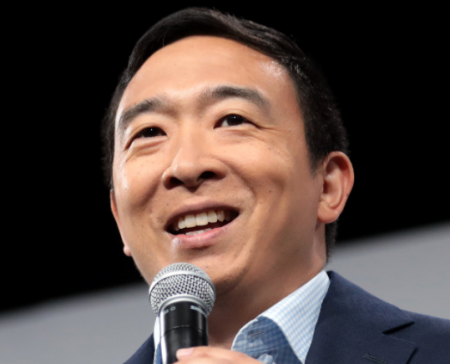
This negative deluge of coverage for Yang continued with what was interpreted as condescension to the LGBTQ community in his interview at the Stonewall Democratic Club. That interview was fully chronicled in a NYT article on April 23rd, which I am told generated over 200,000 clicks on the Times’ website. Then in May with all those potholes Yang kept hitting at high speed, in the rear view mirror, the narrative hardened that Yang was suffering from a knowledge gap, exposed in articles, op-eds and editorials (which became most prominent when Yang fumbled the release of his policing and MTA plans). Too many pundits had previously seemed to presume Yang carried a Teflon shield and paid too little notice to the cumulative effect emanating from this slow-moving avalanche of negative coverage. Moreover, Yang’s campaign did not combat effectively and in truth rarely tried to turn around that avalanche of negative coverage.
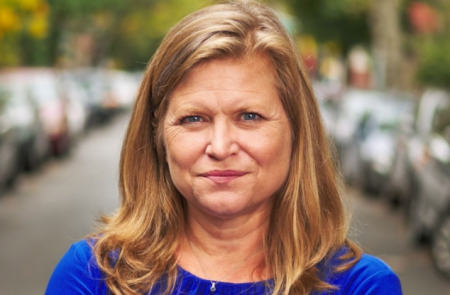
The editorial endorsements of Garcia by the Times and the Daily News, which raked Yang over the coals both implicitly and explicitly and the Post endorsement of Adams exposed the flaw in Brad Tusk’s architecture of the Yang campaign’s path to victory. Yang had built his base upon three very skinny legs (Orthodox and Hasidic Jewish voters, Asian voters and non- ideological hipsters) which in the aggregate created a pool just over a quarter of the vote. Therefore to win, Yang would have to expand that disparate base to include Hispanic and highly educated professional women as well as White Catholic and non -Orthodox Jewish voters (so that Yang could break into what I described in my April 15th column as the core of the iron triangle within which a majority of primary vote is cast here in NYC). Consequently, when the editorial board endorsements powered the rise of Kathryn Garcia, tied to the knowledge gap narrative surrounding Yang, it blocked Yang’s ability to consolidate the white vote, which was essential to his campaign’s strategic success. At this stage, Yang does not appear to have a sturdy bridge to reach out to Hispanic voters as the final piece of what Yang’s campaign has repeatedly told reporters is their path to victory.
The telltale sign of Yang’s decline was not just his clear slide in the NY1/Ipsos poll ,but the fact that recently day after day Yang is not getting major coverage in the free print coverage of this race (after dominating that coverage from January through May). The clearest sign of Yang’s slide was the small squib of a piece in the Saturday June 5th Post article, which came underneath the major stories on Garcia and the candidates’ New York accents, entitled “The job’s a game to Yang” carrying his quote from an interview on WFAN that one of reasons Yang wanted to run for Mayor was to “have a blast” rubbing elbows with Big Apple sports stars. The fact that the Post would deliver that final blow underscoring the gravitas gap undermining Yang’s case to voters, but then not think it worthy of being a major story, spoke volumes. The media seems to see Yang as a fading horse in this race and it would be hard to rebut that assessment.
Could Yang turn it around? Perhaps, especially if Adams and Garcia both collapsed down the stretch, but that prospect of their dual collapse is not likely. If Yang does lose this primary, pundits will focus on the fact that while about 85 percent of New Yorkers told pollsters all along that they knew who Yang was (and many folks liked his infectious optimism), with one exception no poll ever showed Yang getting above a quarter of the primary vote. That gap between those voters that knew Yang and those who said they would cast a vote for him will become the foundation for post-election analysis of why Yang’s mayoral campaign failed.
The other big change since April, was the quick rise and even faster fall of Scott Stringer’s campaign. Six weeks ago, Stringer appeared to be gathering momentum, garnering the endorsements of the WFP and the UFT as well as Local 237 of the Teamsters, putting him on a path to consolidate the progressives, with an open lane to garnering the support of more traditional liberal and moderate Democrats. The subsequent collapse of the Morales campaign (from a wave of bad stories around a possible bribe, a questionable tax break and internal campaign labor strife) would have benefited Stringer and probably left Wiley in the back of the pack. But the allegations of now two women against Stringer, over the last five weeks, have left the Stringer campaign adrift and seemingly without recourse to project viability.
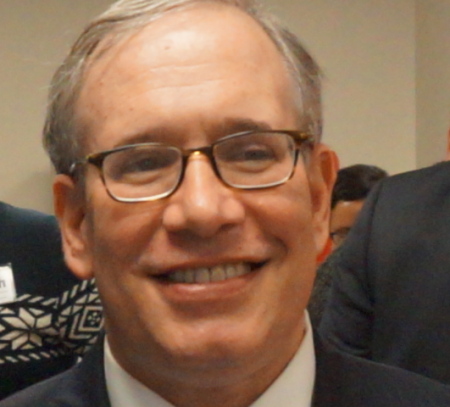
Remarkably, until the second woman came forward, Stringer had shown real resilience. He had fought back into relevance clinging to somewhere between 10-15 percent of the vote, depending upon the poll and he seemed to have surprising amount of second and third choice support (e.g., if the NY1/Ipsos poll is accurate). Consequently, Stringer still is relevant, in terms of where his votes go, even if he were to lose more first place support. The bottom line is clear, any late shift to other candidates among not only Stringer’s first choice supporters but also his second, third and fourth place voters, could become a significant factor. Will those Stringer voters go to Garcia on the mix of experience and competence, or Wiley on ideology or even Adams as the new front runner? Or will these Stringer first place voters stay with Stringer? And finally, will these Stringer voters divide evenly among the leading candidates or will they shift decidedly to a single candidate? The answers to those questions could become a key factor determining the ultimate winner of this primary.
Which brings us to how the new RCV system might impact the final outcome of this primary. I stand by what I argued in that April 15th column, there is no template either for how NYC voters will use the RCV system or what candidates can do to maximize their chances from benefiting under the RCV system. In short, we will all start to learn a lot once all the RCV votes are counted. But there are three preliminary questions worth keeping an eye out for.
First, what percentage of voters in this Democratic mayoral primary will choose to only vote for one candidate? The Fontas poll released on the Wednesday before Memorial Day, found that 30 percent of primary voters will only vote for one candidate, not even trying to participate in the RCV system. Moreover, that poll reported that the percentages of those who said that they would only vote for their first choice would be highest among Black, Hispanic and older voters in general. If the Fontas polling data proves an accurate prediction, that means that just shy of a third of voters in this primary will have their votes count for less than those who cast votes for two to the maximum of five choices in this contest. Let me quickly add that one can only hope that as more public education is done, in explaining the RCV system, that a far higher percentage than 70 percent will take advantage of the option to rank their choices. That way in practice, we would not have a situation where just shy of two- fifths of the primary electorate will have their votes count for less while a little over three-fifths that do use the RCV option, would count for more in terms of the final outcome, especially if race and ethnicity are a key dividing line. The last thing we need in NYC politics, is the feeling to take hold among minority voters, that in just over a decade after a minority majority took a firm hold of NYC’s electorate, we unwittingly created a 3/5 problem undermining the confidence in the system within New York’s minority majority.
Here is how that could go terribly wrong. Let’s say for sake of argument that Eric Adams finished a clear first among first place votes, with exit polls showing him with strong support from Black and Hispanic voters, but Adams wound up losing the primary, because a candidate who finished second or third among first place votes, racked up second and third place votes from voters disproportionately younger and White. That scenario could generate a sense of outrage bordering on betrayal among minority voters. On the other hand , you could just as easily see an Adams or a Wiley, racking up a lot of Black support, and even though they did not fully benefit from getting a large reservoir of second choice Black votes , they won by getting lot of RCV support from white voters (Adams from older white ethnics or Wiley from younger white progressives). Such an outcome would avoid controversy, especially if the candidate who finished ahead among first place votes, ultimately won the primary. I for one will be praying that this RCV system works smoothly and without controversy. But it will be worth keeping an eye on what percentage of voters cast only one vote and whether or not there is a racial divide within that cohort of single choice voters.
The second question to keep an eye on is what impact the “exhausted ballot” has on the outcome? Nate Cohn wrote a superb article on this topic on May 29th in the Times. Cohn explained that a ballot is said to be “exhausted” when every candidate ranked by a voter has been eliminated and thus that ballot no longer counts as the RCV system runs its course. Within the confines of this RCV system , the exhaustion of ballots makes sense, but if in the retrospect the aggregation of single choice voters and “exhausted ballots” is perceived to have skewed the outcome, one can see that NYC voters begin to complain that this RCV system was a Rube Goldberg trap that we should not have enacted so hastily ( i.e., used first in a most consequential mayoral election). Worst of all, as Cohn pointed out, wide open large multi-candidate fields like this year’s mayoral race in NYC, tend to lead to a higher percentage of exhausted ballots. Here again, I am hoping that exhausted ballots do not create controversy and that the RCV system proves at once smooth and popular with voters. Nevertheless, the post-election reaction to exhausted ballots will be worth keeping an eye on.
The third question focuses upon what order candidates are eliminated under in the RCV count. This will be especially relevant because while pundits tend to lump candidates into ideological as well as racial and ethnic lanes, the voters can be surprisingly eclectic. For example, in the 2020 Democratic race for President, the pundits arbitrarily put voters into moderate and progressive lanes. But when the votes were counted on Super Tuesday and beyond, Biden did surprisingly well with blue collar male voters who had voted for Bernie Sanders in 2016, while also getting a large share of the highly educated suburban women who had gravitated to Warren (but who if viewed solely through the prism of ideology would have been projected to go for Sanders with Warren out of the race). The lesson to be learned, is that many voters refused to boxed in by punditry bordering on sophistry.
So this year in NYC, the pundits have tended to lump the four so-called moderates into one lane (Adams, Yang, Garcia and McGuire) with the three progressives in another lane (Wiley, Stringer and Morales) with Donovan floating in between depending upon the issue. But what if a lot of Black voters choose Adams and Wiley as their first and second choices? Alternatively, will Wiley’s attempted take down of Adams lead his first-place voters to pass on voting for her as their second choice? Or what if Garcia, Wiley and Morales share a lot of female voters under RCV, who think it is time for an impressive woman regardless of her ideological bent? Finally, could the extensive experience of Stringer and Garcia lead to more voters to ranking both of them high on their ballots, despite the perception among pundits of Stringer as a pure progressive and Garcia as a raging moderate? Finally, if Yang does sweep the Asian vote as well as the Orthodox and Hasidic vote, in terms of first place votes, who does best in terms of getting the second and third choice votes in both of those voting blocs? Will it be Adams or a surprise choice? If any or most of those surprises occur under RCV , the outcome could hinge upon the order in which the candidates are eliminated, especially if the last or next to last candidate eliminated before the final count between the top two, has ranked choice votes that favors one as opposed to the other of the final two candidates standing. My hunch and it is just a hunch, is that there could be lot more RCV synergy between Wiley and Garcia and Garcia and Stringer than many are factoring into the equation.
So, when I put down the pencil that I am using to chart this mayoral maze for the last time before the votes are counted, what does it look like? I think Yang is fading and unless Wiley can significantly raid Adams among Black voters, Adams has the edge. If, however, Wiley can crack Adams base among outer borough Black voters, then all bets are off and that opens the door for Garcia (if she can form a de facto coalition between highly educated professional women and white ethnics) or Wiley (if that cracking becomes a rout among black voters breaking for Wiley). But let me end as I began, for the hard math underlying this primary still tells me that the ultimate winner of this primary will be the candidate who captures the late break among Hispanic voters as the final piece of their Rubik’s Cube for victory. Then he or she who best aligns the Hispanic vote into their coalition, will be the next Alcalde of New York.
Bruce N. Gyory is a Democratic strategist and a Senior Advisor at the law firm of Manatt, Phelps & Phillips LLP, who used to teach a course in national and state voting trends as an adjunct professor at the University at Albany-SUNY.
